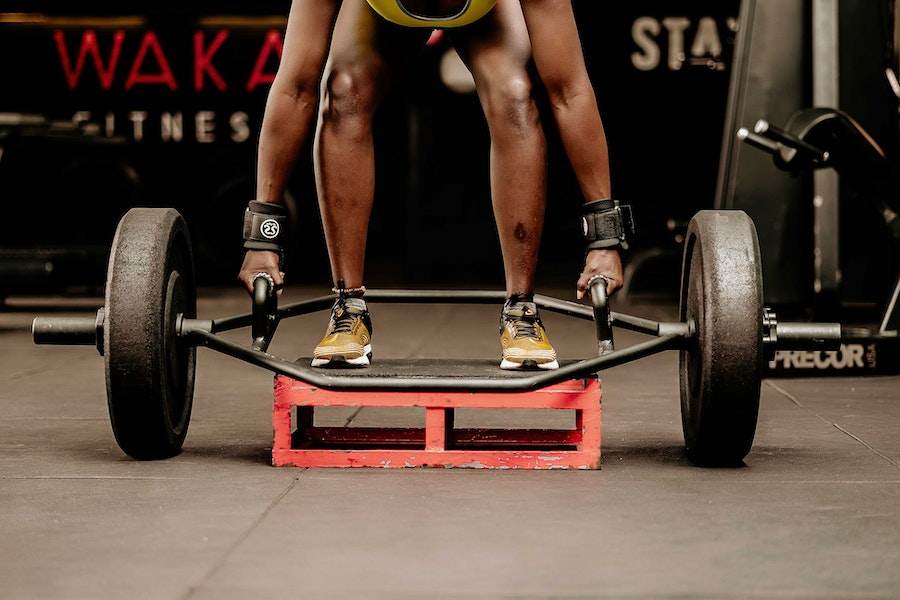Deadlifts are one of the most popular exercises among fitness enthusiasts and gym-goers alike. They are a great way to build strength, size, and power. However, there are some who have expressed concern about the safety of this exercise. Is doing deadlifts bad for you? We’ll explore the pros and cons of deadlifts to help you decide if it’s right for you. Deadlifts are versatile and can be used to target various muscle groups and create balanced strength. They can also be used to increase overall power, as well as build functional strength. Additionally, the exercise can help build core and lower back strength, which is essential for good posture and injury prevention. On the flip side, the exercise can be dangerous if not done properly, as improper form can lead to injury. Furthermore, deadlifts can put a lot of strain on the spine, which can lead to injury if done excessively. Ultimately, it’s important to weigh the pros and cons of deadlifts and make an informed decision.
Are Deadlifts Bad For You?
No, deadlifts are not bad for you. In fact, they are one of the best exercises you can do because they work so many muscles at once. When done properly, deadlifts are a safe and effective exercise that can help improve your strength, power, and overall fitness. However, like any other exercise, it’s important to learn how to do them correctly before starting out. And if you have any medical conditions or injuries, be sure to talk to your doctor before adding them to your routine.
How To Determine If Deadlifts Are Right For You
Assessing Your Current Fitness Level
If you want to determine if deadlifts are right for you, the first thing to do is assess your current fitness level. This will help you determine what level of difficulty is best for you and how to adjust the exercise accordingly. It will also help you determine which muscles are being targeted and how you can maximize the benefits from deadlifts. There are a few different ways to determine your current fitness level. For starters, you can assess your overall level of fitness using a scale of 1 to 10. One being the lowest level of fitness and 10 being the highest. You can also use a scale of beginner, intermediate, and advanced. Beginner being someone who has been exercising for less than 6 months, intermediate being someone who has been exercising for 6 months to 1 year, and advanced being someone who has been exercising for more than 1 year. You can also assess your fitness level by what activities you’re currently doing. If you’re already exercising and know what type of exercises you’re performing, you can use this to assess your fitness level.
Learning The Right Form
While it may seem like a simple exercise, the right form is essential in order to get the most out of deadlifts. This exercise targets several different muscles, including legs, glutes, core, back, and upper body. It can also be done with different variations in order to tackle specific muscles more than others, depending on your needs. There are a few key things to keep in mind when learning the right form for deadlifts. First, make sure your feet are positioned about hip-width apart. Next, make sure your grip is about shoulder-width, palm facing towards you. Finally, make sure your knees aren’t bent too much and your back is straight.
Understanding The Benefits Of Deadlifts
Deadlifts are excellent for building strength and toning your lower body and core. They can help to improve balance, flexibility, and muscle endurance, making them the perfect addition to a comprehensive workout routine. They also have several other benefits, including Boosting metabolism and promoting weight loss – One of the best benefits of deadlifts is that they can actually boost your metabolism and help promote weight loss. This is due to the fact that they increase your heart rate and can help you to burn more calories while you exercise. Improving posture – Deadlifts are also great for improving posture, as they help strengthen your core. This can be helpful for people who spend long hours sitting at a desk each day and could be experiencing some of the negative side effects of sitting too long, such as back pain. Improving joint health – One of the biggest benefits of deadlifts is that they can help to improve joint health. This can be extremely beneficial for people who have joint issues, such as arthritis, as it can help to ease inflammation and stiffness. Boosting self-confidence – One of the most underrated benefits of deadlifts is that they can boost your self-confidence. This is due to the fact that they can help you to develop a more toned and fit body, as well as improving your posture. Not only will this boost your self-confidence, but it can also help you to feel more confident in general.
Researching Safety Precautions
There are a few safety precautions to keep in mind when researching deadlifts. Most importantly, make sure to use the correct form. Doing so will help to prevent injury and keep you from overloading your muscles and joints to the point of injury. When it comes to choosing the right amount of weight, keep in mind that it’s better to start with less weight and gradually increase it over time. This will help to prevent injury and ensure that you’re using the proper form. Make sure to also take breaks between sets and remember to hydrate. When it comes to the right footwear, make sure to choose a pair of shoes that are sturdy and supportive. This will help to protect your feet and lower body from injury. To keep your knees healthy while doing deadlifts, make sure they’re not bent too much. Finally, make sure to stretch your muscles to help avoid injury and achieve the most benefits possible from this exercise.
Adjusting The Exercise To Your Needs
Depending on your current fitness level, there are a few different ways you can adjust the exercise to your needs. If you’re a beginner, you may want to start off with just the barbell, which will make the exercise easier. If you’re an intermediate exerciser, you can start incorporating dumbbells and the hexagonal barbell, or hex bar. If you’re advanced, you can try adding kettlebells and a trap bar. You can also look for other ways to adjust the exercise to your needs. If you have joint issues, such as arthritis, you can start off with a lighter weight in order to prevent injury. You can also start off with fewer repetitions, but make sure to build up over time as your joints get stronger and become more accustomed to the exercise.
Incorporating Deadlifts Into Your Routine
There are a few different ways to incorporate deadlifts into your workout routine. The most common way is to do them as a standalone workout at the end of your routine. You can also include them as part of a circuit, or a series of exercises performed back to back. You can also use them as an alternative to other exercises, particularly ones that work your back and core. If you’re new to deadlifts, you may want to start off by including them as a standalone workout at the end of your routine. This will allow you to focus solely on the deadlift, making sure you’ve mastered the proper form. Once you feel more comfortable, you can incorporate deadlifts into a circuit or as an alternative to another exercise.
Knowing When To Adjust Weight
When it comes to adjusting the amount of weight you use when performing deadlifts, there are a few things to keep in mind. First, make sure you’re using the proper form. If you’re using the right amount of weight but you’re not using the proper form, you could end up with an injury. Secondly, your level of fatigue. If you’re towards the end of your workout and you feel fatigued, it’s best to use less weight so that you don’t risk injury. If you’re using the correct amount of weight and you’re still struggling to finish your set, you can add a few more repetitions or increase the amount of weight that you’re using. Or, if you’re struggling to finish just one rep, it’s best to use less weight.
Listening To Your Body
It’s important to listen to your body when exercising, particularly when incorporating deadlifts into your workout routine. If at any point you feel pain or you notice that your form is off, stop exercising. This could indicate that you’ve injured yourself and should consult with a doctor to determine what’s going on. If you’re feeling dizzy, or lightheaded, or you have a tingling sensation in your fingers, you may be over-exerting yourself and should take a break. If you find that your muscles are especially sore after each workout, you may be overdoing it. Make sure to give yourself enough time to recover before your next workout.
Finding Resources To Help You Succeed
There are a few resources that can help you succeed with deadlifts and other types of strength training. First, you can find information and advice from professionals by attending fitness workshops or reading fitness magazines and blogs. Second, you can join a local fitness group
Benefits Of Deadlifts
- Increased strength and muscle size
- Improved posture and injury prevention
- Enhanced core and lower back strength
- Greater power and functional strength
- Improved coordination and balance
Potential Risks Of Deadlifts
- Injury due to improper form
- The strain on the spine
- Excessive loading which can lead to fatigue
- Difficulty maintaining proper form during high-intensity workouts
Conclusion
Ultimately, it’s important to weigh the pros and cons of deadlifts and make an informed decision. Deadlifts can be a great way to build strength and boost your overall power, but they can be dangerous if not done properly. Be sure to start slow and focus on proper form to prevent injury and make the most of this great exercise.




















Leave a Reply